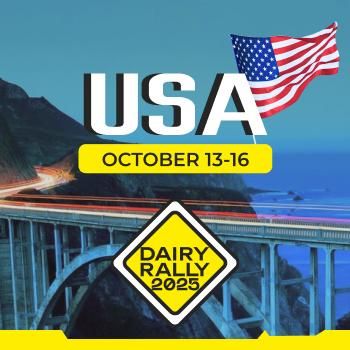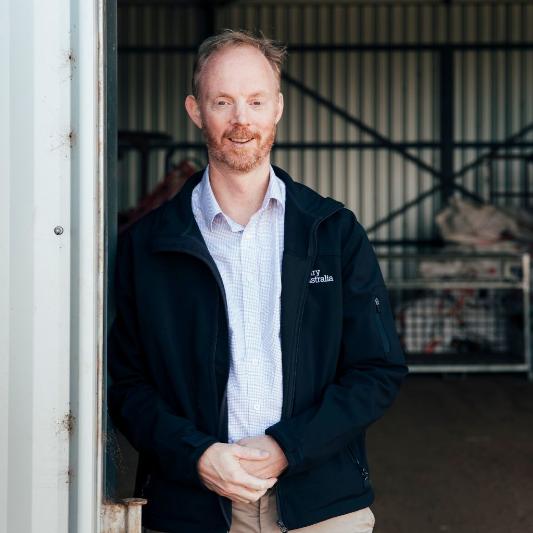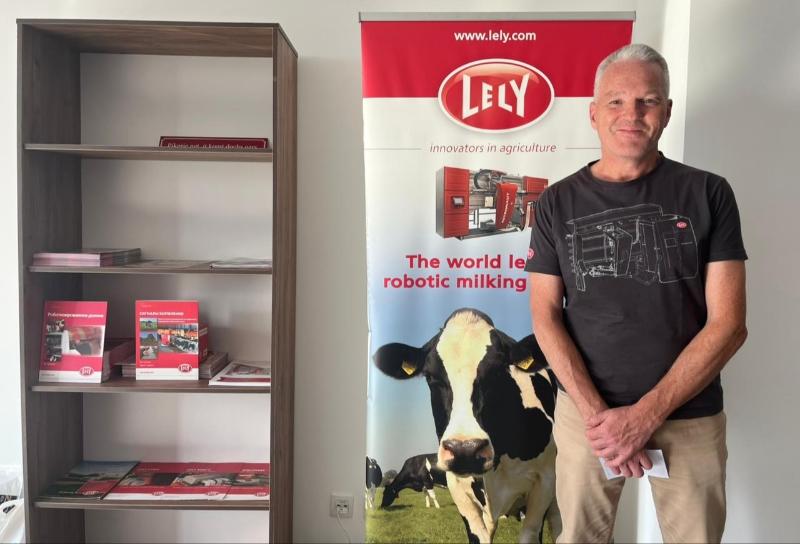Pushed to the brink
Sourse: DairyNews.today
MILK PRODUCTION could plummet by up to 15 percent in the southern Murray-Darling Basin if water buybacks are not halted immediately, a new study has shown.
The report, commissioned by Dairy Australia, revealed Australia’s annual milk production could fall by up to 270 million litres if the Federal Government presses on with water buybacks that will strip dairy farms of vital water supplies. The independent analysis is the first of its kind to focus on dairy and the implications across the supply chain.
Conducted by global consultancy Ricardo, the Australian Dairy Industry Council says the report confirms the industry’s concerns — water buybacks aren’t just a policy lever; they are an indiscriminate force with far-reaching economic and social consequences.
ADIC chair Ben Bennett said the modelling presented two realistic buyback scenarios — returning 302 Gl or 683 Gl of water — both of which would cause irreversible damage to dairy farmers, dairy processors and dairy communities.
“The report has found buybacks would reduce the consumptive water pool by seven to 16 percent, pushing water allocation prices up by 17 to 40 percent, especially during dry years,” Mr Bennett said. “These higher input costs, for water and feed, severely erode farm profitability, particularly for those with low water entitlement ownership. “Under extreme dry conditions, some dairy farms could experience financial losses of up to 535 percent, or more than $430,000 in a single year.”
The modelling also shows a reduction in milk production of three to 15 per cent — translating to a loss of 60 to 270 million litres annually.
Not just farmers
ADIC deputy chair John Williams said the impact of this on dairy processors’ revenue was modelled at up to $545 million each year.
“Reduced milk supply exacerbates existing overcapacity, leading to higher unit costs, greater competition for milk, rising transport costs, and
a higher risk of plant closures,” Mr Williams said “The effects from dairy farm and processor spending cuts flow right through rural communities, particularly to rural suppliers and service providers, threatening local jobs, business viability, and the broader regional economy.”
The ADIC is calling on the Federal Government to immediately halt further buybacks and instead implement a smarter, more balanced water recovery plan that strikes the right balance between environmental outcomes, food production and the long-term resilience of regional community.
“A whole-of-industry and government approach is critical to safeguarding the future of Australian dairy, and the communities and businesses that rely on it,” Mr Bennett said.
‘Eroding’ food production
Victorian Farmers Federation Water Council chair and northern Victorian dairy farmer Andrew Leahy said the report was a “wake-up call” for the future of the industry. “This is the first report to comprehensively assess the impacts across the entire dairy supply chain, from the farm to the processor and the broader community,” he said.
"What it shows is deeply concerning — the [Murray-Darling] Basin Plan is eroding our ability to produce food. “When water is taken from agriculture, it’s not just the farmers who suffer, it’s the entire food production system in the southern basin and the massive economic contribution the industry makes.”
The report also highlights how water buybacks are exacerbating water scarcity. “Water allocation prices could soar by as much as 40 per cent in dry years,” Mr Leahy said. “The current price for allocation water in the Murray region is $180 per megalitre. With water buybacks, that price jumps to $252. “In extreme drought conditions, like those we saw in 2019, that same water price could skyrocket to $840 per megalitre, a 40 per cent premium.”
The VFF says the consequences of the basin plan’s pain is already apparent — according to the Frontier Economics report of 2022, the dairy sector has already lost 400 million litres of milk production from 2012-2022. With an additional 270 million litres at risk due to ongoing water buybacks, this amounts to nearly 800 million litres of milk that has been displaced from the market in just over a decade.
Lifeblood of rural communities
Northern Victoria is the largest dairy-producing region within the Murray-Darling Basin and is especially vulnerable, the VFF said. The region produces 1.476 billion litres of milk annually, representing 80 per cent of the basin’s total dairy output.
United Dairyfarmers of Victoria president Bernie Free said the report made for concerning reading. “The dairy industry is the lifeblood of rural
communities across northern Victoria,” Mr Free said. “It supports 3000 farm jobs and over 3500 jobs in dairy processing across 11 facto-ries. Additionally, more than 6200 people are employed in related industries.
“A reduction in milk production is a direct hit to these communities, putting livelihoods and local economies at risk.” Mr Leahy said the findings of this report highlight the urgent need for the Federal Government to acknowledge the detrimental effects of water buybacks.
“We cannot afford to ignore the long-term impacts of the basin plan any longer. “We need action to protect both our water resources and our food production capabilities before it’s too late.”
Conducted by global consultancy Ricardo, the Australian Dairy Industry Council says the report confirms the industry’s concerns — water buybacks aren’t just a policy lever; they are an indiscriminate force with far-reaching economic and social consequences.
ADIC chair Ben Bennett said the modelling presented two realistic buyback scenarios — returning 302 Gl or 683 Gl of water — both of which would cause irreversible damage to dairy farmers, dairy processors and dairy communities.
“The report has found buybacks would reduce the consumptive water pool by seven to 16 percent, pushing water allocation prices up by 17 to 40 percent, especially during dry years,” Mr Bennett said. “These higher input costs, for water and feed, severely erode farm profitability, particularly for those with low water entitlement ownership. “Under extreme dry conditions, some dairy farms could experience financial losses of up to 535 percent, or more than $430,000 in a single year.”
The modelling also shows a reduction in milk production of three to 15 per cent — translating to a loss of 60 to 270 million litres annually.
Not just farmers
ADIC deputy chair John Williams said the impact of this on dairy processors’ revenue was modelled at up to $545 million each year.
“Reduced milk supply exacerbates existing overcapacity, leading to higher unit costs, greater competition for milk, rising transport costs, and
a higher risk of plant closures,” Mr Williams said “The effects from dairy farm and processor spending cuts flow right through rural communities, particularly to rural suppliers and service providers, threatening local jobs, business viability, and the broader regional economy.”
The ADIC is calling on the Federal Government to immediately halt further buybacks and instead implement a smarter, more balanced water recovery plan that strikes the right balance between environmental outcomes, food production and the long-term resilience of regional community.
“A whole-of-industry and government approach is critical to safeguarding the future of Australian dairy, and the communities and businesses that rely on it,” Mr Bennett said.
‘Eroding’ food production
Victorian Farmers Federation Water Council chair and northern Victorian dairy farmer Andrew Leahy said the report was a “wake-up call” for the future of the industry. “This is the first report to comprehensively assess the impacts across the entire dairy supply chain, from the farm to the processor and the broader community,” he said.
"What it shows is deeply concerning — the [Murray-Darling] Basin Plan is eroding our ability to produce food. “When water is taken from agriculture, it’s not just the farmers who suffer, it’s the entire food production system in the southern basin and the massive economic contribution the industry makes.”
The report also highlights how water buybacks are exacerbating water scarcity. “Water allocation prices could soar by as much as 40 per cent in dry years,” Mr Leahy said. “The current price for allocation water in the Murray region is $180 per megalitre. With water buybacks, that price jumps to $252. “In extreme drought conditions, like those we saw in 2019, that same water price could skyrocket to $840 per megalitre, a 40 per cent premium.”
The VFF says the consequences of the basin plan’s pain is already apparent — according to the Frontier Economics report of 2022, the dairy sector has already lost 400 million litres of milk production from 2012-2022. With an additional 270 million litres at risk due to ongoing water buybacks, this amounts to nearly 800 million litres of milk that has been displaced from the market in just over a decade.
Lifeblood of rural communities
Northern Victoria is the largest dairy-producing region within the Murray-Darling Basin and is especially vulnerable, the VFF said. The region produces 1.476 billion litres of milk annually, representing 80 per cent of the basin’s total dairy output.
United Dairyfarmers of Victoria president Bernie Free said the report made for concerning reading. “The dairy industry is the lifeblood of rural
communities across northern Victoria,” Mr Free said. “It supports 3000 farm jobs and over 3500 jobs in dairy processing across 11 facto-ries. Additionally, more than 6200 people are employed in related industries.
“A reduction in milk production is a direct hit to these communities, putting livelihoods and local economies at risk.” Mr Leahy said the findings of this report highlight the urgent need for the Federal Government to acknowledge the detrimental effects of water buybacks.
“We cannot afford to ignore the long-term impacts of the basin plan any longer. “We need action to protect both our water resources and our food production capabilities before it’s too late.”














